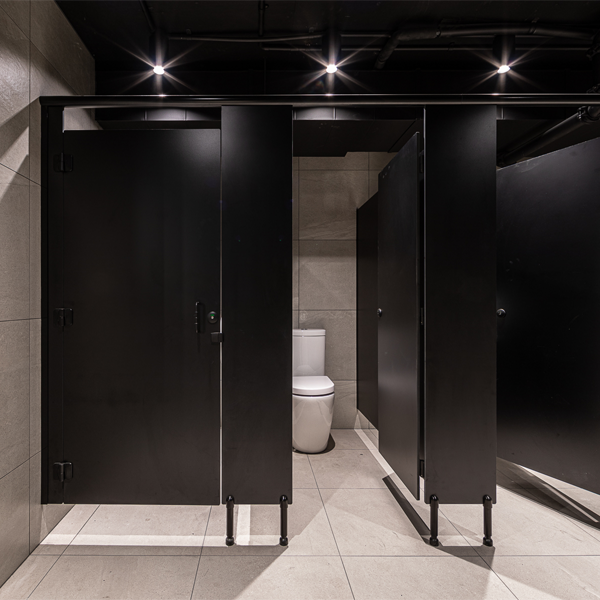Experts suggest that public washroom designs are not given the level of importance they deserve. However, the way we use public washrooms has transformed in recent years with innovation and the advancement of technology. As different sectors are identifying the psychological influence of washroom use and incorporating them correctly to suit various types of people, modern restrooms have been providing users with better experiences.
The current scenario, however, has reminded us to reconsider the importance of safe
washroom spaces.


The Safety Protocol
Although medical science hasn’t figured out a vaccine for COVID-19 yet, various facts behind its transmission and infection have been identified, and more are to be acknowledged very soon. Businesses around the world are now queuing up for a restart relying on the safety protocols and health requirements provisioned. Preventing virus transmission relies on two major disciplines: cleanliness and social regulation.
Some offices have already incorporated the new safety protocols for their office spaces, maintaining social distance among employees, reducing common touchpoints, and introducing new cleanliness practices as a few of the basic rules. But we haven’t heard much about maintaining similar safety protocols in a public washroom.
Design for Public Washroom
While implementing safety codes for COVID-safe public restrooms, space can be one of the challenging factors. Now is the best time to put smart space planning into action because maintaining a social distance among the users is the uncompromisable safety code for transmission-free public spaces.
Since washroom designs don’t usually attract adequate importance, space planning in most public washrooms that exist today doesn’t even satisfy the pre-COVID era requirements. The right space planning not only ensures the safety of users but also secures the maximum efficiency of the space. Utilising the maximum space is even more critical today, given that washroom will be able to accommodate significantly fewer people in their area because of new safety codes.
Achieving an accessible public washroom with a single entry and exit points is crucial in maintaining a safe washroom. The primary purpose of washroom or toilet partitions on previous occasions had been managing the privacy of users. These barriers can now play a vital role in hindering the transmission of microorganisms from one person to another. Installing appropriately designed partitions can be critical in solving space issues in public washrooms.
Technology And Tools
Advancement in technology has been crucial in providing users with better washroom experience over the years. Now is the time for technology to create a safer washroom space. Technology can be pivotal in delivering a touch-free experience in public restrooms and eliminate frequent touchpoints.

The most common touchpoints in washrooms include doorknobs, taps, flush switch etc. Automatic doors, touch-free sinks and automatic flush are not new concepts. It’s just they haven’t been widely introduced in washroom facilities. With timely upgrades, these technologies have become better than ever. Using them in public restrooms will play a vital role in keeping the area safe to use.
It’s not possible to automate everything in the washroom, as some doors need to be locked manually. To address this, companies have recently introduced knobs that can be pushed and pulled with hips and arms. Such tools are essential in all washrooms of today.
Cleanliness for Public Washroom
Cleanliness has never been this important in public spaces, let alone public washrooms. Implementing advanced cleaning routines and ensuring clean surfaces should be the primary priority of public washrooms of today.
There have been suggestions that natural antimicrobial surfaces like copper and silver will make their comeback in public restrooms post-COVID, but there is nothing more effective than frequent cleaning.
Clean air is as essential as a clean surface in a confined space like public restrooms. Recent studies have shown the probability of airborne transmission of COVID in enclosed areas. So proper and frequent circulation of air is crucial for public washrooms.
Also Read: Tips to Improving Commercial Washroom Experience
Discipline
Following the safety protocols and maintaining discipline matters, especially in a public washroom. People incorporating habits, whether it be washing hands frequently or social distancing, ensure a safer environment. Using reminder marks on the visible spots can help people recall the discipline that is worth following.







